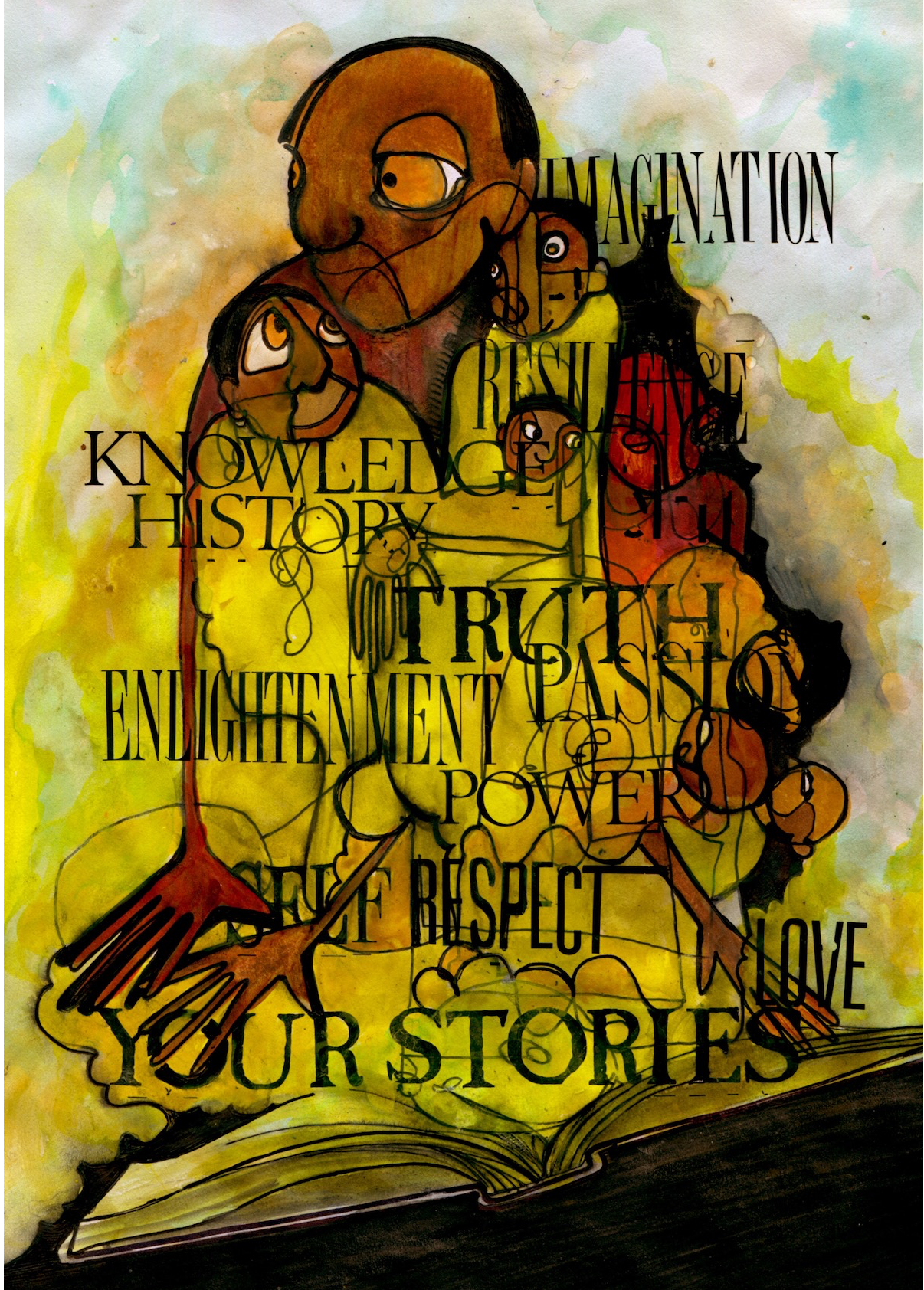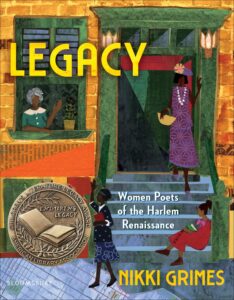Best Books to Give Black Readers This Holiday Season, 2021
Best Books to Give Black Readers This Holiday Season, 2021
Although this year was just as trying as last year, I still managed to read and recommend many great YA books by Black authors.
I even had a few surprises when I was directly asked by two Black authors to review their books.
Winter is the perfect time to curl up with a good book, so why not give them as presents this holiday season? Check out the best books to give Black readers during this 2021 holiday season.
Legacy: Women poets of the Harlem Renaissance by Nikki Grimes
I reviewed this poetry book earlier this year, and it is still lingering in my mind. This 2021 book bridges the past and present by featuring the unheralded voices of Black women Harlem Renaissance poets and Grimes’s own original poetry. The latter’s poems utilize the “Golden Shovel” method, taking one line from a Harlem Renaissance poem and using the words to create an entirely new poem. Accompanying the poems are sumptuous visual art pieces by some of the finest contemporary Black women illustrators. Although this collection is intended for a middle-grade audience, poetry lovers of all ages can appreciate this book.
Getting By by Jaire Sims
When I was approached to review this 2020 book about a Black gay autistic protagonist figuring out his identity and future, I couldn’t say no. Given that there are only a small handful of books about Black autistic characters by Black autistic authors, I felt duty-bound to review this book as a Black neurodivergent reader. Despite experiencing bullying, his first romantic relationship, and some uncertainty about his college plans, the protagonist, Carver, remains honest and true to himself. While the formal narration style might not be for everyone, this book is a hidden gem that shines bright.
 The Tristan Strong Trilogy by Kwame Mbalia
The Tristan Strong Trilogy by Kwame Mbalia
This year saw the release of Tristan Strong Keeps Punching, the final book in Kwame Mbalia’s epic adventure series inspired by African and African American folktales and mythology. Centered on a twelve-year-old boy named Tristan Strong, the series sees its protagonist overcome internal and external threats to the land of Alke, a world populated by Black folk heroes and mythological characters. The previous two books, Tristan Strong Destroys the World and Tristan Strong Punches a Hole in The Sky, were released in 2020 and 2019. It was my immense joy to review these books, and I look forward to reading more from the author.
(Book 3 Review) | (Book 2 Review) | (Book 1 Review)
 Every Body Looking by Candice IIoh
Every Body Looking by Candice IIoh
This novel in verse follows a Nigerian American teen named Ada as she begins college and starts figuring out what she truly wants for herself. Told in poems that express Ada’s past and present as well as trauma and triumphs, this book shows how Ada’s passion for dance affects her coming-of-age experiences as a Black girl. Although this book discusses sensitive topics such as fatmisia, misogynoir, sexual assault, and parental verbal abuse, Ada’s love of dance gradually allows her to embrace everything about herself that the world rejects. As the book progresses, Ada taps into her burgeoning talent while exploring career goals and her orientation.
Things We Couldn’t Say by Jay Coles
Although I wasn’t sure what to expect when I was asked to review this book, its sensitive and opinionated Black bisexual protagonist, Giovanni, instantly won me over. Gio is a young man dealing with a lot: the return of the mother who abandoned him, his shaky relationship with his father, and a crush on a new boy at school. Yet it is through navigating these experiences that Gio learns the true meaning of love when it comes to family and romance. This book teaches how complicated love can be with a contemplative cast of characters and down-to-earth conversations.

The Afro YA promotes black young adult authors and YA books with black characters, especially those that influence Pennington, an aspiring YA author who believes that black YA readers need diverse books, creators, and stories so that they don’t have to search for their experiences like she did.
Latonya Pennington is a poet and freelance pop culture critic. Their freelance work can also be found at PRIDE, Wear Your Voice magazine, and Black Sci-fi. As a poet, they have been published in Fiyah Lit magazine, Scribes of Nyota, and Argot magazine among others.

Top photo by EKATERINA BOLOVTSOVA via Pexels





 I was immediately pulled in by Gio’s voice and his first-person internal monologue. He is angry, but he is also sensitive and has anxiety and depression. Much of Gio’s emotions and personality expresses his experiences of being a Black, bisexual young man who is learning to experience life after significant trauma. He is multifaceted and true to life in the way he speaks and in the roles he plays as an older brother, son, and friend. This is demonstrated in internal dialogue such as, “But look, just because I live in the ‘ghetto’ doesn’t mean I’m out here holding a Captain America shield everywhere I go. I’m gonna give her the benefit of the doubt and not let the ghetto jump out of me to cuss her out.”
I was immediately pulled in by Gio’s voice and his first-person internal monologue. He is angry, but he is also sensitive and has anxiety and depression. Much of Gio’s emotions and personality expresses his experiences of being a Black, bisexual young man who is learning to experience life after significant trauma. He is multifaceted and true to life in the way he speaks and in the roles he plays as an older brother, son, and friend. This is demonstrated in internal dialogue such as, “But look, just because I live in the ‘ghetto’ doesn’t mean I’m out here holding a Captain America shield everywhere I go. I’m gonna give her the benefit of the doubt and not let the ghetto jump out of me to cuss her out.” Of all the thoughts Carver shares with the reader, his thoughts about different levels of attraction are some of the most surprising and validating. Given that some people assume that autistic people are too childish to understand romance and sex, it was gratifying to see Carver openly and privately lust after men. At the same time, watching him realize what he wants from a romantic relationship by dating his best friend, Jocelynn, demonstrates the complexity of navigating personal sexuality.
Of all the thoughts Carver shares with the reader, his thoughts about different levels of attraction are some of the most surprising and validating. Given that some people assume that autistic people are too childish to understand romance and sex, it was gratifying to see Carver openly and privately lust after men. At the same time, watching him realize what he wants from a romantic relationship by dating his best friend, Jocelynn, demonstrates the complexity of navigating personal sexuality. Stone’s oldest biological daughter, London, is almost as bad as her father. Caught between a desire to please her family and rebel against them, she belittles or ignores Tiffany for most of the book. When London and Tiffany first meet, she makes a rude, colorist comment about how dark Tiffany’s skin is. Later, she films Tiffany falling on the basketball court and then shares the video with her friend, who uploads it with racist overtones added in. Although London swears she didn’t want things to go that far due to how her dad monitors his children’s social media, this is a really flimsy excuse.
Stone’s oldest biological daughter, London, is almost as bad as her father. Caught between a desire to please her family and rebel against them, she belittles or ignores Tiffany for most of the book. When London and Tiffany first meet, she makes a rude, colorist comment about how dark Tiffany’s skin is. Later, she films Tiffany falling on the basketball court and then shares the video with her friend, who uploads it with racist overtones added in. Although London swears she didn’t want things to go that far due to how her dad monitors his children’s social media, this is a really flimsy excuse. One of the most intriguing things about
One of the most intriguing things about
Recent Comments